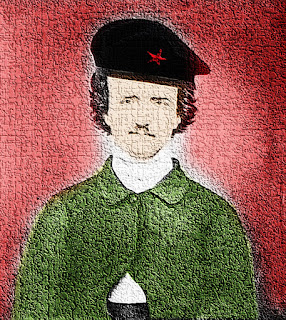The allegory of “A Dream Within A Dream”

Poe’s “A Dream Within A Dream” (1849) appealed to me when I was a teenager because, having English as my second language, I was drawn in by its simplicity. Not a long poem, no difficult vocabulary, no convoluted imagery, and a very fine, polished, elegant patina on the poem’s two stanzas. Actually, there are three parts to the poem. First, there is the three-line intro, which I call The Farewell. The poet narrates his farewell kiss to an unnamed interlocutor, apparently someone he is leaving behind. Then, there is a Soliloquy, which could be addressed to the separated loved one referenced in the first segment, but really appears to be addressed to an unnamed audience: perhaps unknown even to the poet himself—to those “who deem/That my days have been a dream.” It could be all of us. Finally, there is The Beach. Poe describes himself standing on a “surf tormented shore,” lamenting his inability to securely hold the sand that pours out through his fingers to be savaged by “the p...


